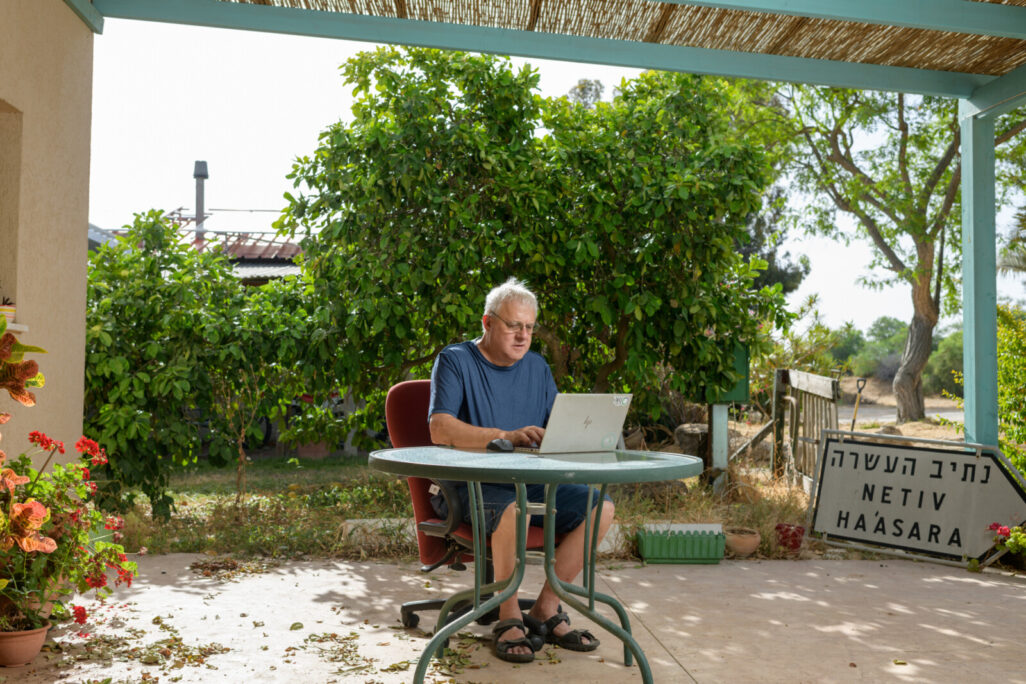
For Ofer Hermati, 63, a resident of the central city of Kfar Saba for over 40 years, there wasn’t a specific moment when he decided to move to Moshav Netiv HaAsara, just 100 yards from the Gaza border. After the outbreak of the war, Hermati came to the moshav “to help, simply to help with whatever was needed,” he tells Davar. Initially, he came alone, then with friends and colleagues, and then repeatedly. Realizing that he was spending more than half of each week in the moshav, he decided it was time to rent a house there. “I don’t know what’s going to happen to me, what’s going to happen to the Western Negev, or to the country,but one thing I know: I need to be here,” he says.
Roi Azizi, 26, a social activist from Jerusalem, describes his move two months ago to a rented house in Kibbutz Gevim, two miles from Gaza, as akin to the pangs of childbirth. Since Oct. 7, Azizi has been on reserve duty, which interrupted his intensive work managing entrepreneurship programs for young people in Jerusalem. “But right from the start of the war,” he recounts, “an inner fire began to burn in me, growing stronger over time. In my head, I kept asking myself: Should I leave everything in Jerusalem and move to the Gaza border? I asked, wondered, and asked again until I felt I could no longer hesitate. At the beginning of January, I packed up and came here.”
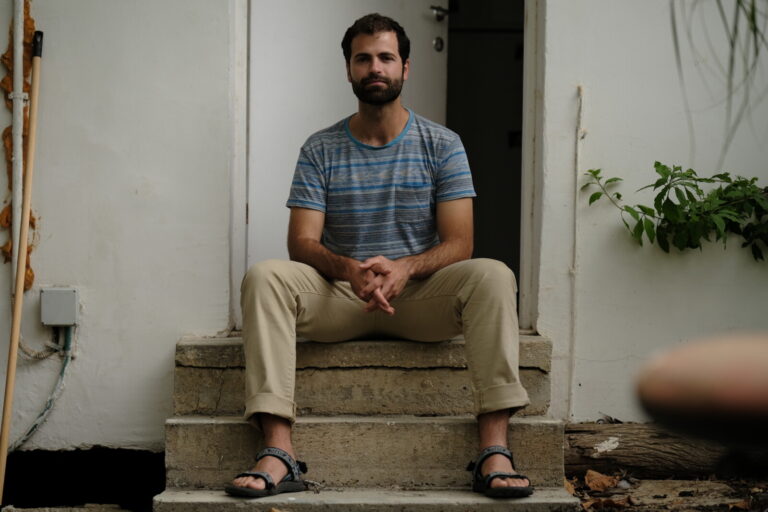
For Avner and Tal Mizrachi, 23 and 22, the war allowed them to finalize a decision they had already made about their future—settling down in Sderot, a small city less than a mile from Gaza. Avner has been studying at a yeshiva in Sderot and has lived there for several years. It was here that he met Tal, a seminary student, through a match made by their rabbis. “It was an excellent match,” says the couple with broad smiles. The two managed to get married last December, during Avner’s reserve duty, and on March 1, without hesitation and after weeks of apartment hunting, they settled in the center of Sderot, close to the yeshiva and the ruins of the police station, which was destroyed in battle on Oct. 7. “It so happened that we arrived on the first day residents began returning from evacuation,” the couple says. “We wanted the city, and it wanted us.”

Elroi Benita, 30, also chose Sderot. When he rented an apartment in the city over a year ago, he was living in Bnei Dekalim, about 20 miles west of Sderot. “I wanted to rent out the apartment as an additional income, but I ended up living in it,” he explains. Now, he lives in a new building on the western side of Sderot, and at night he hears bombings and gunfire from the Gaza Strip.
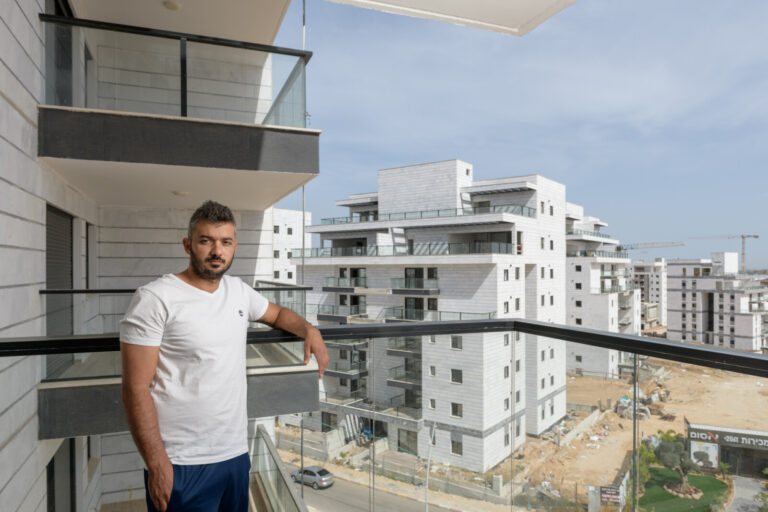
Why Here?
The motivations behind their choice to settle in the Gaza border area are both varied and similar. For Azizi, the activist from Jerusalem, it was an inner fire that ignited within him, “until at a certain point I felt this was the national mission at the moment,” he says.
Hermati, who volunteered on Moshav Netiv HaAsara before moving there, also thinks in terms of a new national mission: “We need to establish Israel 2.0,” he says, “and the Gaza border area will be the center where this renewal happens.” Thinking in terms of national mission is nothing new for Hermati, who grew up on Kibbutz Ramat HaKovesh and served in the Nahal Brigades, a unit that combines military service and values-based educational service for Israeli youth. In his view, Israel failed its people on Oct. 7 and the system now needs to be completely reset. “The current leaders must be replaced by young people, and the move to the Gaza border and its renewal should be part of this renewal,” he says. “It’s just one part of the bigger picture of what we need right now.”
In recent months, Azizi has spent considerable time in libraries, poring over texts by the nation’s founding figures: Theodore Herzl, Berl Katznelson, and David Ben-Gurion. “The Western Negev has had significant opportunities to flourish,” he says, pointing to periods of development before the state’s establishment and then again with the rise of Prime Minister Menachem Begin in the late 1970s and during the wave of immigration from the former Soviet Union in the 1990s. “Each of these was a small push, but not enough,” he says. “Now we have a fourth opportunity. I want to be part of making this region attractive to young people, to those who feel disillusioned with the country, security, the economy, and the future.”
For Benita, who came to Sderot from Bnei Dekalim, living in the Gaza border area is a personal sacrifice he feels compelled to make. “Someone has to live here in the end,” he says. According to him, for the country to survive, there are sacrifices others make that he doesn’t have to, and he’s grateful for that. “But in areas where I can contribute, why not?” he says.
Benita’s family had lived in an Israeli settlement in the Gaza Strip until the 2005 disengagement from Gaza. When he lived there, he saw himself as a protective barrier for the border area. “Because we left there,” he says, “what happened now has happened. You always need to live on the edge. Living in Sderot is the price I’m willing to pay.”
Avner and Tal Mizrachi attribute their decision to settle in Sderot to spiritual strength and a family atmosphere. “Sderot is where we delved deeply into our Torah studies and developed our personal character, which is incredibly powerful,” Tal says. For Avner, the yeshiva represents a center of spiritual and moral strength that drew him to establish a home in Sderot. “A person learns best where their heart desires,” he says. “Studying the Torah has allowed us to build a strong character, one of heroism, redemption, and the eternity of Israel—everything we need now more than ever.”
Beyond the yeshiva and seminary, Tal and Avner love Sderot for its people, warm atmosphere, and simplicity. “We’re building our home here because of the family-like environment, the warmth, and the close-knit community of young families and neighbors who know each other well.”
The New Routine
Transitioning to a new home entails establishing a new way of life. When Hermati first arrived at Netiv HaAsara, the moshav resembled a military base. Missiles and shells were fired on the moshav on an hourly basis. Entering through the main gate was impossible; one had to maneuver through the fields. Much of the agricultural work had been done by workers from Thailand, who left after the war broke out. Hermati took over what was needed. “While I’m originally from a kibbutz, I didn’t know how to milk cows, so they taught me,” he says. “Now, I wake up early in the morning, milk the cows. It's my therapy.”
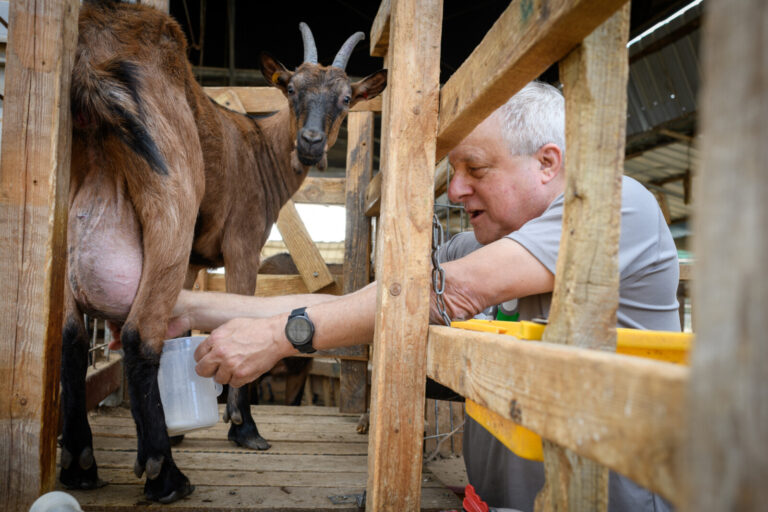
Throughout the day, he works remotely on his computer for his hi-tech company, swims in the recently opened pool in the nearby regional council of Sha’ar HaNegev, and volunteers in various initiatives for the region’s revitalization. When he missed the bridge games he used to play when living in Kfar Saba, he found a bridge group in the southern city of Ashkelon. “Since then, I travel there once a week for games,” he says.
Azizi's ultimate goal is to build a bridge between Tel Aviv and the Western Negev. He aims to create a network of social frameworks that will help young people integrate into the existing fabric, including solutions for housing, employment, businesses, and culture.
In order to pave the way for development, he has met with former IDF Chief of Staff Aviv Kohavi and with Gadi and Reuma Kedem, the parents of Tamar Kedem, who was murdered in Nir Oz along with her husband and three children.
He knows that there are already several pioneering initiatives in the area, and his goal is to successfully connect with the right project. “My motto has always been integration, not domination," he says. “Not to create bubbles of young people who come here just for themselves.”
He meets people "from all the towns, kibbutzim, and moshavim [in the Western Negev], and gathers what is needed to attract people there.” Thanks to his past work with the Jewish Agency, he is also promoting a project to bring new immigrants from England to the area. “I’m very busy,” he says. “And as a traditional Jerusalemite, I can say I miss having a synagogue.”
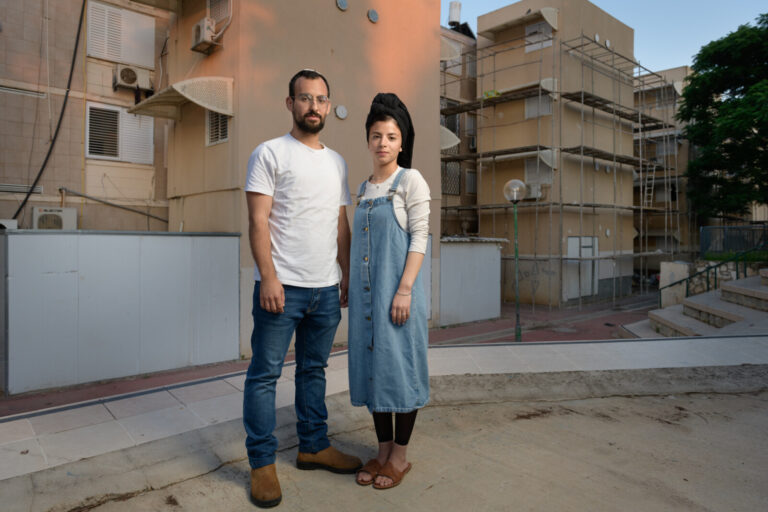
Avner and Tal Mizrachi are decorating their modest apartment and already see and meet many young families with strollers in the parks. Avner is still studying in yeshiva, while Tal is pursuing a degree in education. “Being here and building here, raising children, developing and expanding,” says Avner, “it comes from the Torah.”
Part of the building they live in is covered in shrapnel. Two missiles hit it directly in the early days of the war, serving as a constant reminder that Sderot is still a battleground. Alarms sound a few times a week. “There are a lot of miracles happening here, with shells falling without hitting people,” they say.
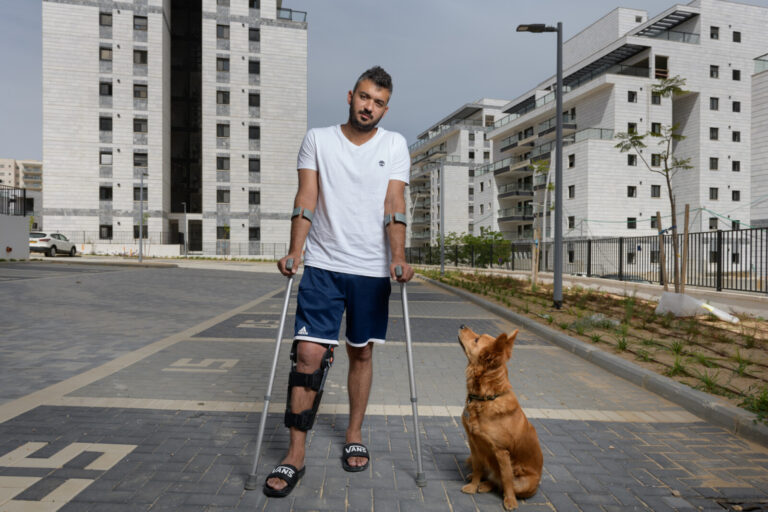
The bombings also affect Benita’s life in Sderot. At the beginning of the war, he was injured, and he is now undergoing a long recovery at home and in the hospital. He lives in a neighborhood deep in construction, but his new apartment has a safe room. It’s hard for him to move around because of the injury, and the difficulty of defending himself in case of gunfire keeps him mostly at home. “I hope the recovery will be completed before going back to Lebanon, so I can rejoin my unit,” he says.
He receives a regular payment from the Ministry of Defense, which allows him some stability. He plans to sell his old apartment and is considering opening a business in the city. “The recovery is still long,” he says. “I don’t know how much money I’ll have, so everything is step by step.”
Benita’s sister moved to Sderot before him, so he knew the area well before moving. “But now it’s a completely different city,” he says. “The whole city is traumatized by everything that happened here. Seven months have passed, but you can't ignore it.”
The Security Question
Life in the Gaza border area, both present and future, is overshadowed by the question of security. The family from whom Hermati rented his house had their house infiltrated on Oct. 7. During the Hamas attack on the moshav, 18 civilians were killed.
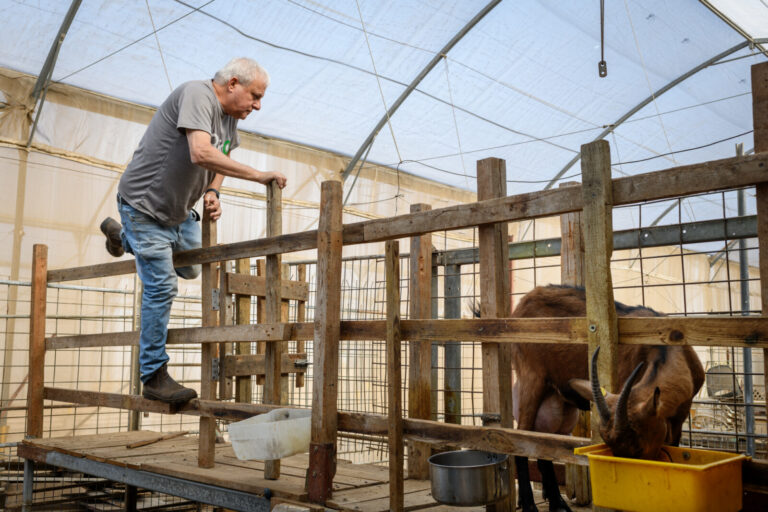
“Returning to life here is going to be a whole story,” says Hermati, “because what will this life even be?” So far, he and his family are the only ones living on the moshav with children. “There’s a lot of debate here about what it means to live here. What people are willing to accept. The moshav is not a kibbutz, and every decision here is personal.”
According to him, bringing back older individuals is not a big issue, “but young families with children need security, and here the IDF has not provided any security.” Not even “absolute victory” in Gaza will restore trust among the residents, some of whom have already said they won’t return, he says.
A loud explosion reverberates from the direction of Gaza as Azizi remarks, “I’m not bothered that it’s still not secure here.” He smiles. “What’s the alternative? That people won’t come here? That the border region remains a vulnerable land that fades away? Yes, the security question is crucial. It’s worth fighting for a better security reality here, but to do that, one needs to be here. For me, it’s a moral imperative.”
Tal and Avner Mizrachi hold a strong and sincere belief that this time the situation will change, that there won't be more Iron Dome interceptions and gunfire, and certainly not what happened on Oct. 7. But their belief is tempered by doubt. “That’s my fear, that the situation won’t change,” admits Tal. “If we wake up ten years from now and are still subject to terror, it will be very sad for me. But even then, we’ll make every effort to stay.”
Avner shares that from conversations with longtime residents, many parents can now recognize signs of post-trauma in their children. “I struggle with the thought that they might see us as those vulnerable souls living in shelters, putting our children at risk,” he says. “ I’m not afraid of it, but I know we need to acknowledge it, to be honest with ourselves. On the other hand, it’s a situation that allows for resilience. I know that Sderot and we will develop, grow, expand, and strengthen.”
Benita, who grew up in an Israeli settlement in Gaza, learned as a child how to identify within seconds when explosions or missiles are aimed at him and seek refuge. “But today,” he says, “it’s a completely different story in terms of the quantity of explosives. The missiles falling now are much more serious.”
His decision to live in the border area is final, at least for now. If not Sderot, he says he will move to one of the kibbutzim adjacent to the fence, perhaps reminiscent of his childhood and youth. “I have many concerns,” he admits, “partly because I think we’re not doing a good job in Gaza. Let’s say I wouldn’t bet all my money on there not being another Oct. 7 in ten years. But I’m ready to live here. At least for now, while I don’t yet have children.”
What do their relatives say?
Surprisingly, the decision to move to the border area doesn’t raise many eyebrows from their relatives. Hermati still commutes to his home in Kfar Saba, where he lives with his partner, who works in the education system and was unable to relocate herself alongside him. “It’s okay, right?" he chuckles. “A bit of distance also means fewer fights.” On weekends, they spend most of their time in Netiv HaAsara with their dog. “Overall, all my kids are very supportive, but my youngest grandkids don’t come here,” he qualifies. “Their parents are worried, and I understand that. There’s fear, and there will always be fear.”
Azizi recounts receiving praise from his family and surroundings when he announced his decision, and when he decided to resign from his previous job in Jerusalem, the management immediately understood. In the border area, there aren’t so many young people these days, or people in general. The big return wave to the Sha’ar HaNegev Regional Council hasn’t started yet. “Today, I’m working on recreating my social framework, and to be honest, it’s hard to move my friends from Tel Aviv. That’s actually the challenge—how to create a space here that will allow people accustomed to the comfortable and affluent life of Tel Aviv to be here.”
Benita, who has many friends and family who also once lived in settlements in Gaza, has gotten very little pushback to his decision. “The situation doesn’t really scare anyone,” he says.
When Tal Mizrachi thinks about holding a housewarming party, she realizes that perhaps some of her siblings won’t want to come. She herself grew up in the hills of Mateh Binyamin in an Israeli settlement in the West Bank and was witness to many attacks in the area. “So what’s the solution?” she asks, “Not to be here? If we go, then who will be here? My parents and our surroundings understand that, of course, but it’s still complicated.”






